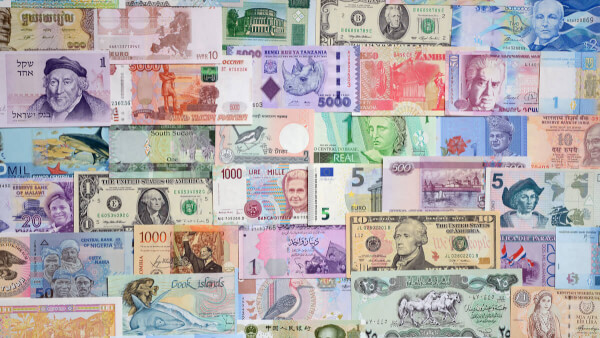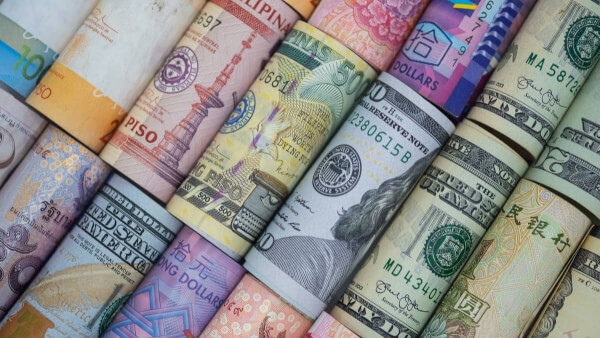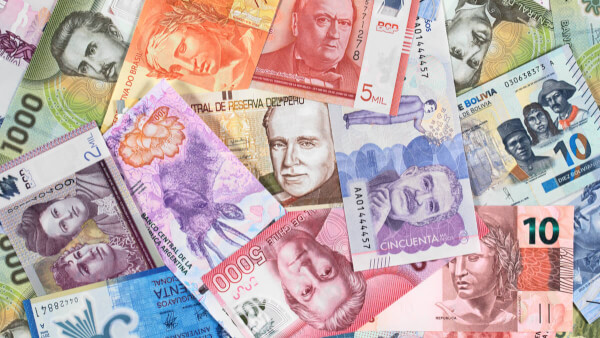Remitbee full guide
Dive into an in-depth exploration of Remitbee, understanding what it is, its service offerings, associated fees, and how it stands out in the online money trans

If you’re heading off to college, balancing your finances can be a daunting prospect. Getting a student account, with a linked card for day to day spending, can be a smart move, to help you manage your money and avoid unnecessary fees.
To help you choose the right student account for you, check out this Chase student account review. We’ll also take a look at an alternative - the borderless account from Wise - as a comparison.
| Table of contents: |
|---|
If you’re age 17 to 24 and enrolled in an eligible course at college, you can apply for a Chase College Checking Account. If you’re aged under 17, you can apply for a Chase High School Checking account instead. ¹
These accounts are available to both US and foreign students, subject to approval. If you’re from the US, you’ll be able to apply online or in a branch - foreign students must attend a branch to have their documents checked.¹
| Get free access to 40+ currencies and bank details to use as a local for US, Australia, New Zealand, Europe and UK with Wise |
|---|
Here’s all you need to know about the accounts on offer from Chase, as well as the important features to consider.
The Chase Student Checking Account gives you access to ATMs around the world, online banking, and easy ways to make payments to your friends and family based in the US using Chase QuickPay with Zelle.²
There’s a monthly charge of $6 - but this can be waived for up to 5 years while you’re attending college. If you’re out of college, you can still have the fee waived if you hold a minimum of $5,000 in the account, or have a direct deposit sent to the account each month.³
If you’re under 17, you might prefer to get a Chase High School Checking account instead. You can apply from the age of 13, and need to go along to a Chase branch to get started. The account will be automatically made into a Chase Total Checking Account when you turn 19. ¹
It’s free to use Chase ATMs, but you’ll pay a fee for using ATMs outside the Chase network, either in the US or abroad. You’ll also pay a fee for card use if you’re spending in a currency other than US dollars, either to make a withdrawal, a payment in a store when you’re travelling, or when you shop online with an international retailer. This is a 3% charge, known as a foreign exchange rate adjustment fee. More on that, later.³
| Wise's multi-currency card lets you spend without a foreign transaction fee. Free ATM withdrawals up to $250 a month. |
|---|
You can make and receive local payments in the US for free using Chase QuickPay with Zelle. To do this, both the sender and recipient will need a US bank account, but you’ll only need to have a mobile number or email to process the payment. ²
If you choose not to use Zelle - or if you need to make or receive an international payment, you’ll pay a fee. We’ll cover these costs in more detail below, but you may pay up to $15 to receive a domestic wire from a bank other than Chase, and up to $35 to send a wire payment to another US account. Sending international payments may cost even more - fees are up to $50 per transfer if you make them in branch, and there may be a mark up on the exchange rate used. ³
If you need to send or receive international payments - or love to travel - you might be better off with a borderless account from Wise to use instead of, or alongside your student account.
The borderless account is a multi-currency account which lets you hold dozens of different currencies, and send international payments using the mid-market exchange rate for just a low transparent fee. You’ll also be able to receive payments for free in major currencies like US, Australian and New Zealand dollars, euros and British pounds.
Finally, the account comes with a linked debit card which makes it easy to spend on the go and shop online with international retailers. You’ll never be charged to spend a currency you hold in your account, so there’s no international transaction fee (also known as a foreign exchange rate adjustment fee)
With the Chase Student Account it is possible to access overdraft services - this is not available with the High School Checking Account. However, it’s worth noting that there are fees to pay for dipping into your overdraft - this may be up to $34 per payment, to a total of $102 per day. Keep an eye on your balance to avoid these fees, or choose the overdraft protection service and link a savings account to cover the difference when you’re running short of money in your student account.³
You can open a Student Checking account with Chase if you’re enrolled in a college course and aged 17 to 24. Accounts are available for both local and international students. Here’s what you’ll need to open an account.¹
US students opening an account online should have:
US students opening an account in a Chase branch should have:
International students opening an account in a Chase branch should have:
Here are the fees you’ll want to know about when deciding if the Chase Student Checking Account is right for you.
| Service | Fee³ |
|---|---|
| Account maintenance fees | $6/month This fee is waived for up to 5 years while you’re in college. It may also be waived if you hold over $5,000 in the account, or receive at least one direct payment into the account per month |
| ATM fees | Chase ATMs are free to use $2.50 charge to use a non-Chase ATM in the US $5 for a withdrawal from a non-Chase ATM internationally, plus foreign exchange rate adjustment fee (see below) You may also pay additional fees levied by the ATM owner or network, if you use a non-Chase ATM at home or abroad |
| Foreign exchange rate adjustment fee | 3% fee applied whenever you use your card to make a payment or withdrawal in a currency other than US dollars |
| Overdraft fees | $34 per item, to a maximum of 3 items - $102 - per day You can link a Chase Savings Account to your student account, to cover payments when there are insufficient funds in your student account |
| Sending and receiving domestic payments | Send money to family and friends in the US for free using QuickPay by Zelle Alternatively you can send a domestic wire payment - $25 fee to arrange online, $35 fee if you need the help of a member of Chase staff To receive a domestic wire payment, you’ll pay $15 - which may be waived if the payment originated from another Chase account |
| Sending and receiving international payments | Sending money in US dollars to a foreign account will cost $40 if arranged online, or $50 if you need the help of a member of Chase staff Sending money in a foreign currency will cost $5 if arranged online, waived if the payment is in excess of $5,000. To arrange in branch, you’ll pay $50. You may also pay a markup on the exchange rate used - more on this below. To receive an international wire payment, you’ll pay $15 - which may be waived if the payment originated from another Chase account |
| There’s no foreign transaction fee and international ATM withdrawal fee ( up to $250 per month) with Wise's multi-currency card |
|---|
A quick note on another couple of costs you should look into, if you’re using your Chase Student Checking Account to send or receive payments. Chase note in their fee schedule that additional charges may apply when receiving either domestic or international payments:
“Other financial institutions and Chase may deduct fees, in addition to those described above, from the amount of the incoming wires, which will reduce the proceeds credited to your account. Any deductions taken by us may include processing fees charged by Chase.”
Check what fees you may need to pay, before you agree to receive a payment into your Chase account.
When you’re sending international payments, it’s also important to take a look at the exchange rate being used to make sure it’s the best deal out there. Many banks add a markup to the rate they offer customers, which can mean payments cost more than you expect. Use an online currency converter to get the mid-market exchange rate for the day, and compare the Chase rate against this before you commit. If you need a cheaper way to make or receive cross border payments, check out Transferwise.
Finding the right student account might take a bit of research, but if you do your homework you’re sure to find an account which works for you. Don’t forget to also look at the borderless account from Wise as a great way to manage your money when you travel, spend, or receive money from overseas.
Sources:
All sources last checked on 6 January 2020
*Please see terms of use and product availability for your region or visit Wise fees and pricing for the most up to date pricing and fee information.
This publication is provided for general information purposes and does not constitute legal, tax or other professional advice from Wise Payments Limited or its subsidiaries and its affiliates, and it is not intended as a substitute for obtaining advice from a financial advisor or any other professional.
We make no representations, warranties or guarantees, whether expressed or implied, that the content in the publication is accurate, complete or up to date.

Dive into an in-depth exploration of Remitbee, understanding what it is, its service offerings, associated fees, and how it stands out in the online money trans

In this article, delve into our MAJORITY review. Explore insights and opinions about its services, features, and alternatives.

Learn about Deriv Currency Accounts, their features, benefits, and how to open one. Discover a new way of participating in forex trading with Deriv.

Learn about foreign currency savings accounts, their benefits, drawbacks, and how to open one. Discover the best banks for these accounts and how to manage fore

Explore the process of opening a foreign bank account, the advantages, the required documentation, and important considerations.

Learn the intricacies of US foreign currency accounts, how to open one, and the advantages they offer. Find out which US banks provide this service and their fe